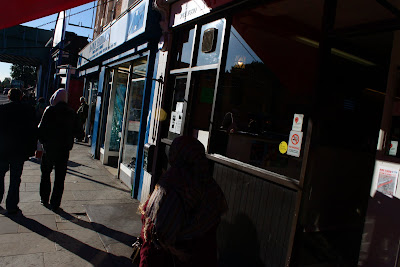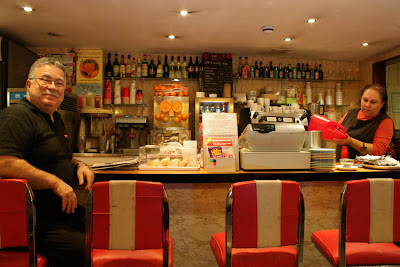






In my incarnation as window consultant, I’ve come here often, after materials for commissions, drapes for backdrop. I’ve been doing so for as long as I remember, since some of my first ever jobs, doing my business and heading back off without, I suppose you could say, considering, noticing what it was as a place. It’s not an area you’d recognise as a thing in itself, just a patch of mostly scruffy houses with a low-end market behind, and it’s only a couple of notices pasted here and there, pretext for conversation, a job having fallen through, that had me considering further.






Something, it’s agreed, must be done, and the council, along with their plans to upgrade the market, find that the strip of houses adjacent along the northern end of Goldhawk Road are of poor quality, and are of frontage inappropriately humble for their scheme.



There is a class of areas whose claim to our affections lies in the melancholy allure with which they seek to be overlooked, to be passed in a hurry by those too busy to notice that the excitement they head for beyond may be surpassed here, less strident, intangible, more profound. And so it was that, discovering that it was to disappear, having visited so often, I at last became aware that this, here, was such an area, its quality, tagged for demolition, suddenly noticeable for having been overlooked.




Who could explain to the council that to knock down the authentic set of the key meeting of Quadrophenia, when Jimmy encounters Kevin, mod meets greaser, is a mistake, in the same way it is to dislodge Turker and Emete from their place at the helm of the last Zippy café, the first Zippy ever in London, perhaps anywhere outside of America? That people come from the States, where the franchise still abounds, to try the only Triple Shake left in the Old World can’t be expected to find its way onto the planning documents, or the pride of the textiles shops in that other local phenomenon, their accelerating proliferation. There were, it appears, a mere five or six years ago just four of these shops, but, with people beginning to cross London for them, another would open, then another and still others, attracting still more customers, until now people come from everywhere, they tell us, Arab royals in limos up to the inappropriately humble little pavement, people up from out of town going to marry, fashion students needing an edge in a new design.



More intriguing still than the facts themselves are their recorders, the shop traders and their quiet pride in their collective creation, or Mr Zippy, as Turker calls himself with a glint, as indefatigable in anecdote as he is in business, his only time for rest, he jokes, at red lights in the van.



Planning documents nowadays are, on the surface, exacting, must bear in mind the existing light quality, aspects of atmosphere, characteristic odours, too, at times. Here at the Bush they delve as far as into the etymology for clues as to character, though skirting over its murkier depths. Shepherd’s Bush, they tell us, refers to the open fields that once characterised the area, and their bucolic exploitation. That this folksier side is cast under doubt by the more scholarly, if superficially less picturesque suggestion that it may well have been a family that went by the occupational name, they fail to mention, missing thereby too a patronymic trail that, who knows? may lead to the notorious crook and prison breaker Jack, whose family, a thrilling legend could potentially be made to have it, once lived here.



It’s the aim of course of this collective blog to capture qualities about an area that pass unnoticed, that are notable, perhaps, for that reason alone, perhaps entice some of the subtler forces of the city out into the open, or furnish routes for a day-to-day with a keener or subtler awareness. It was speaking to the Goldhawk protagonists I began to realise that a study of this area might allow that, by seeking to grasp what the council fail to take account of, perhaps even must ignore – a thing, perhaps, whose existence is dependent on its being unable to be acknowledged by established procedures, a thing that can never quite be grasped.



And yet, even as I sought to record that intangible, I had constantly to suppress at the back of my mind a doubt that it was itself perhaps nothing but the shadow hanging over it, the atmosphere I saw there now not simply inseparable from but an actual product of the demolition order. Certainly I may never have seen the one without the other.




























